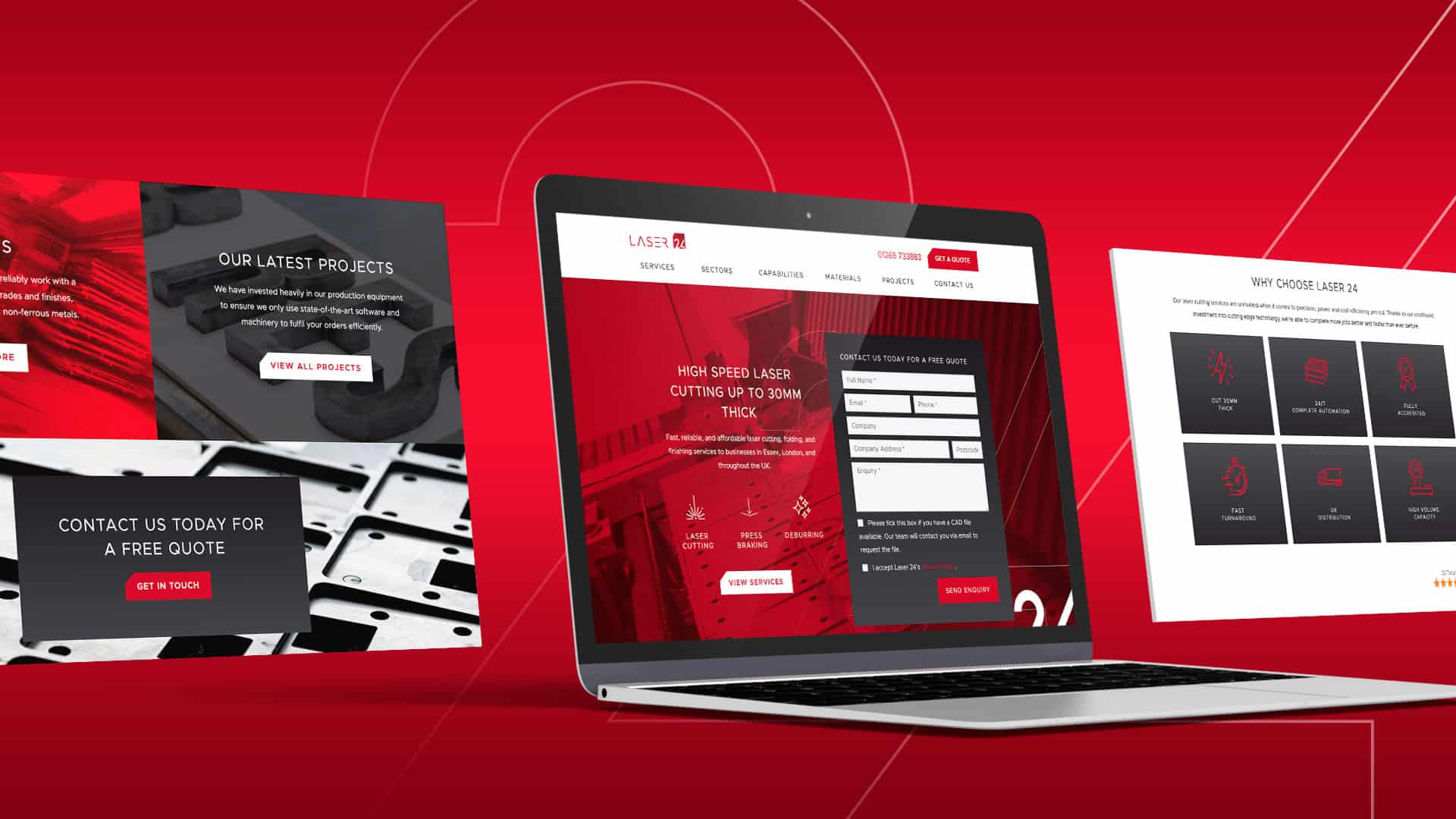In the ever-evolving landscape of modern business, a strong online presence is no longer just an option; it’s a necessity.
Your website is a dynamic reflection of your brand’s essence and value.
It plays a pivotal role in captivating audiences and fostering lasting relationships.
That’s why taking user experience into consideration when creating your website is so crucial.
In this article we delve into the importance of website design, its impact on user experience, and why enlisting the expertise of a web design agency, is key to ensuring your website remains fit for purpose.
The Power of First Impressions: A Visual Identity for Your Brand
Picture your website as a virtual storefront, where potential customers first encounter your brand.
The design of your online space plays an essential role in setting the stage for the customer’s brand experience.
Website design encompasses more than just aesthetics; it’s the combination of visual appeal, strategic layout, and seamless functionality that guides users through their journey.
Each element – from colour schemes and typography to navigational menus and call-to-action buttons – contributes to the narrative of your brand.
your website becomes a visual representation of your company’s ethos and professionalism, which is why it needs to be thoughtfully designed.
Read more about web design and what makes a good website here.
What Is User Experience? (UX)
Enhancing user experience (UX) on a website means focusing on how visitors interact and feel about their online journey.
A well-designed website anticipates what users are looking for, offering intuitive navigation that guides them smoothly towards their objectives.
Key elements like fast loading times, responsive design for various devices, and easy-to-use interfaces are crucial.
These features not only make a site more accessible and enjoyable but also significantly boost the likelihood of users becoming loyal customers.
By prioritising UX, a website becomes more than just a collection of pages; it transforms into a dynamic space where each interaction is an opportunity to engage and impress visitors, fostering a positive perception of the brand and increasing user satisfaction.
This strategic approach to web design is essential in today’s digital landscape, where the quality of a user’s experience can directly influence a business’s success online.
Why Is User Experience Important?
A great user experience is fundamental for business success online.
Beyond being just a set of web pages, a strategic and well-designed website influences visitor actions, leading to more engagement and higher conversion rates.
On the contrary, a poor experience can result in increased bounce rates and negative feedback.
Statistics reveal 72% of customers share positive experiences with about six people, while 13% would share negative ones with at least 15, highlighting the impact of user experience.
In the competitive digital arena, prioritising user experience is key to standing out and building lasting customer loyalty.
What’s the Difference Between UX and UI?
UX, or User Experience, is all about the overall feel of using a website or app. It’s about creating a smooth journey for users from start to finish, making everything they do intuitive and enjoyable.
UI, or User Interface, on the other hand, focuses on the visual aspects that facilitate this journey.
This includes the buttons users click on, the text they read, the images they see, and the layout of the site.
While UI deals with the tangible elements that make up a website or app, UX delves into the emotional response these elements evoke.
Together, they ensure that a website not only looks appealing but also functions in a way that feels seamless and natural to the user.
Understanding the distinction and interplay between UX and UI is crucial for anyone looking to create a digital product that offers both style and substance.
Why should you consider partnering with a Web Design Agency?
Navigating the world of website design and user experience requires expertise that extends beyond basic design skills.
This is where partnering with a web design agency, like us, becomes invaluable.
Web design agencies have an in-depth understanding of design principles, user behaviour, and emerging digital trends.
We collaborate closely with you to create a website designed with purpose, that aligns with your brand identity and business goals.
As new devices, browser updates, and emerging technologies reshape the online experience, we can continually work to evolve your website, ensuring you’re always one step ahead of your competition.
This proactive approach guarantees that your website remains relevant and effective, even as digital trends evolve.
Why Website Design Plays a Crucial Role in Customer Experience?
A great website design is essential for a positive customer experience, acting as your brand’s digital front. It’s not just about looks; it’s about creating a smooth, engaging journey for your visitors.
A well-designed site by a professional agency like Swan Creative can dramatically improve how users interact with your brand, leading to better engagement, higher satisfaction, and increased conversions.
With over 27 years of website design experience, at Swan Creative we understand that every click counts.
Want to find out more about how we build websites?
Check out our article on our step by step web design process. Click here to read.
Partnering with a web design agency, like us, grants you access to a wealth of expertise, that ensures your website not only looks aesthetically pleasing, capturing your audience’s attention but, also ensures tangible results.
If you’re ready to start working with a web design agency, get in touch with us today to transform your digital presence and elevate your business to new heights.
FAQS
- How do you measure the success of a website’s user experience, and what metrics do you focus on to ensure continuous improvement?
The success of a website’s user experience can be measured through various metrics such as user engagement rates, conversion rates, bounce rates, and user feedback.
Continuous improvement is ensured by analysing these metrics and implementing A/B testing to refine and optimise the user journey. - Can you provide examples of how a strategic layout and intuitive navigation have directly impacted customer engagement and conversion rates for your clients?
Strategic layouts and intuitive navigation are crucial for enhancing customer engagement and conversion rates.
For instance, on e-commerce websites, simplifying the path to purchase by reducing the number of clicks to checkout can lead to a significant increase in sales.
Additionally, ensuring that crucial information and call-to-action buttons are prominently displayed can improve user engagement by making it easier for users to find what they’re looking for.
Real-world examples include redesigning a homepage to highlight bestselling products or services, which has been shown to directly impact and boost conversion rates.
This approach not only makes the website more user-friendly but also aligns with business objectives by guiding visitors towards making a purchase or inquiry. - Given the rapid pace of digital trends, how does Swan Creative stay ahead, and what’s the process for updating a client’s website to keep it relevant?
At Swan Creative, we deeply research the target audience and current digital trends to ensure the websites we design are not only visually appealing but also highly functional and relevant.
Once a website launches, we offer flexible support tailored to our clients’ needs, whether on an ad-hoc basis or through ongoing collaboration.
This approach ensures our websites can evolve with your business, staying ahead of market trends and continuously meeting your audience’s changing needs.




